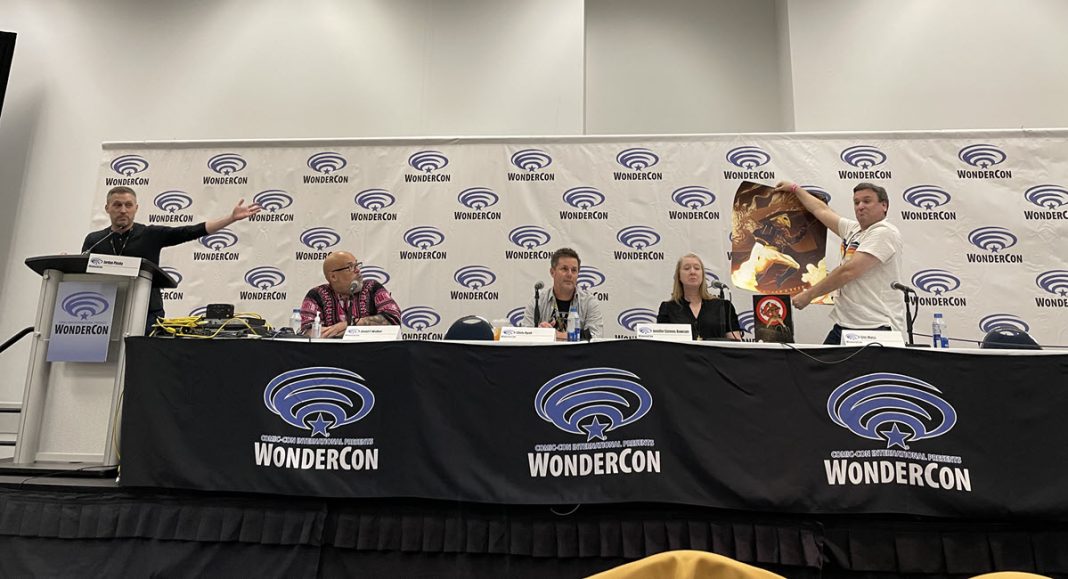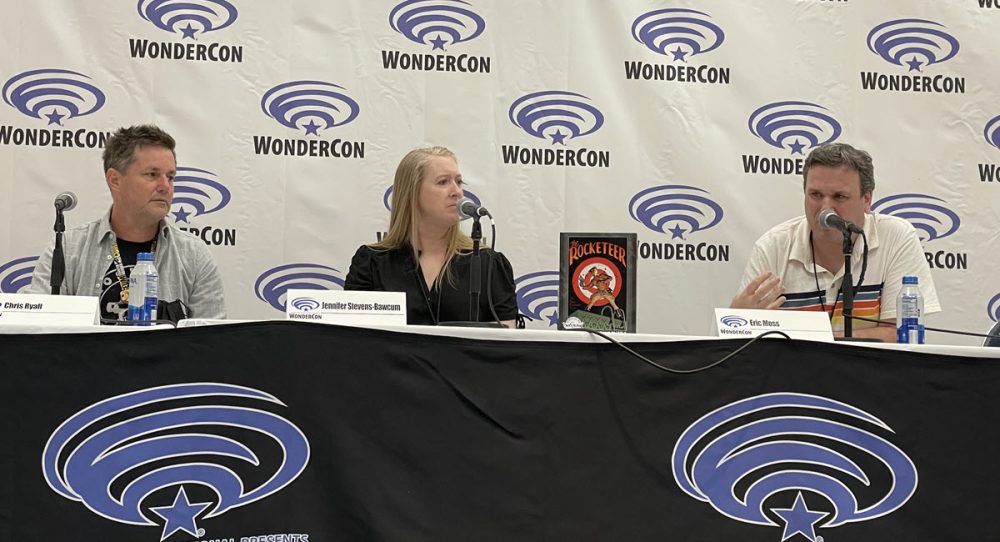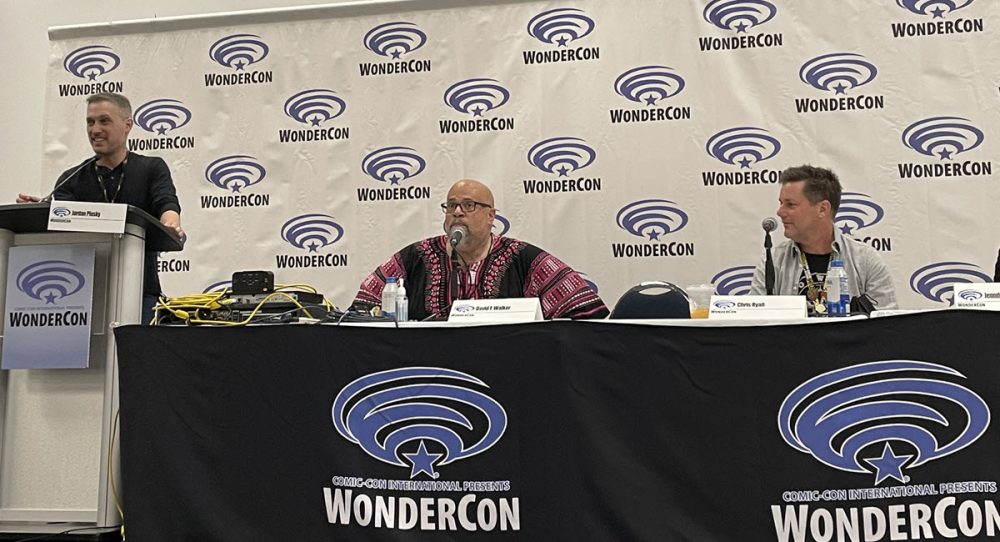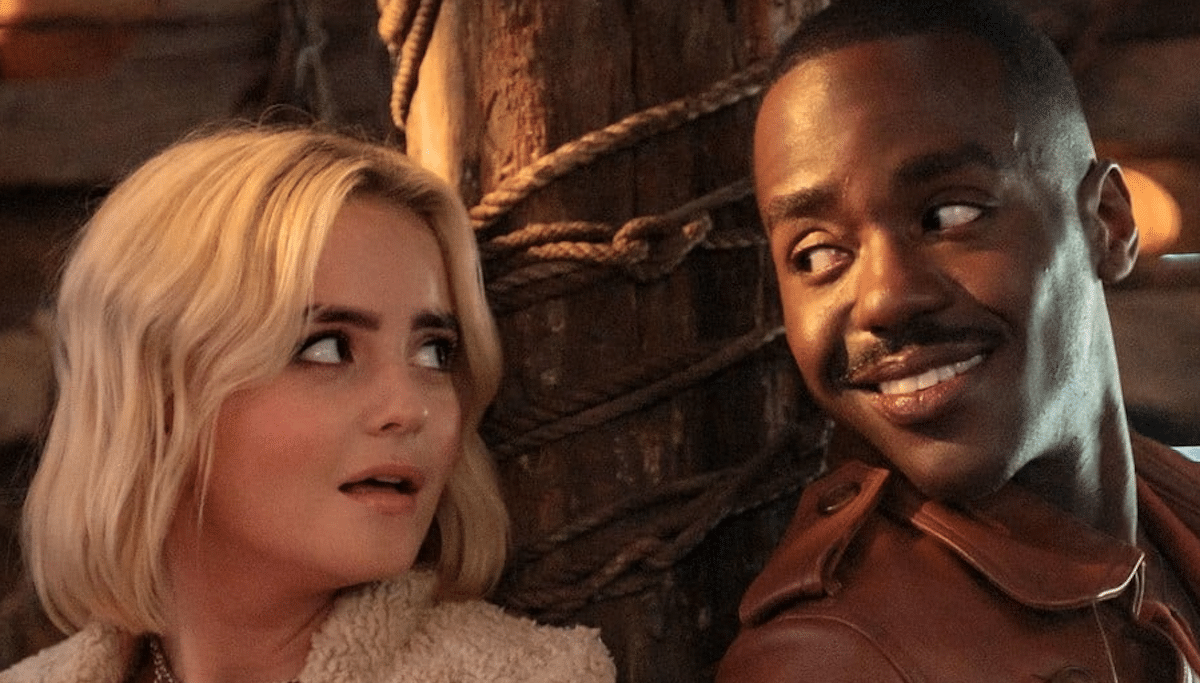By Joanne Saunders
Created during the pandemic, Zoop is a new crowdfunding platform that panelist Eric Moss (co-founder and COO of Zoop) and “The Changing Landscape of Crowdfunding” panel moderator Jordan Plosky (Co-founder, CEO of Zoop) touts as providing a full-service type of help for creators. Moss was the Project Manager of the Keanu Reeves-co-created BRZRKR (BOOM! Studios), which Plosky said is the highest-grossing crowdfunded comic book of all time. The other panelists included Zoop campaign creators David F. Walker (co-creator/writer, Naomi, Bitter Root) Jennifer Stevens-Bawcum (Trustee of Estate of Dave Stevens/The Rocketeer), and Chris Ryall (publisher, EIC, Syzygy Publishing).
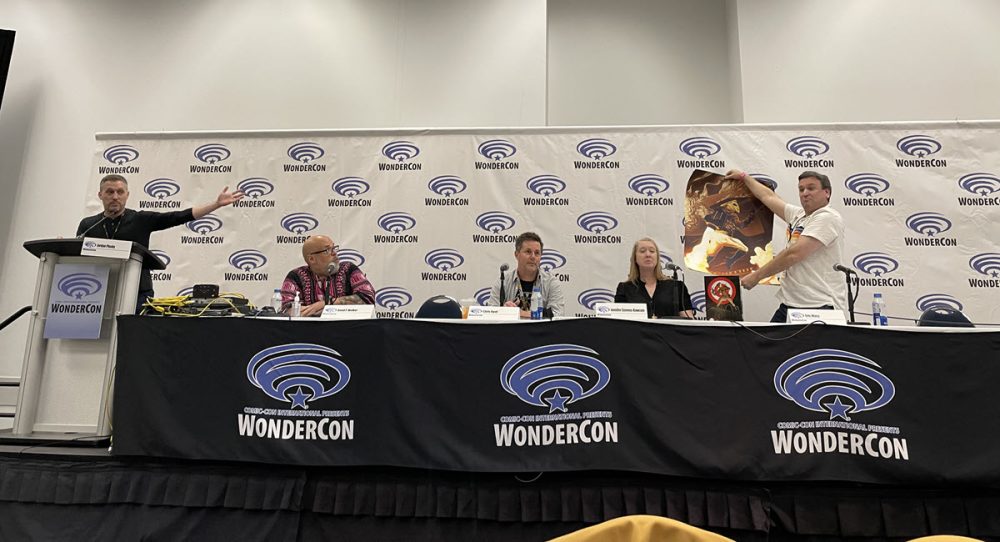
Why crowdfund?
“Everything you do with crowdfunding is the same as with a publisher. Why would you give up your property to a publisher? I don’t need them to screw things up for me,” said Walker, a comic writer who works with artists on his books. Walker, who is currently crowdfunding Imposter Syndrome on Zoop, doesn’t believe in giving part of his IP or profits to publishers when his artists are not being paid enough. Crowdfunding is meant to pay himself back for the costs of producing the work.
“Pre-pandemic, there was not much discussion of crowdfunding. Pandemic closed down access to independent creators. It is interesting to see what will happen now that conventions are back. Putting out your own comic is difficult and even more difficult with a publisher,” Walker said. With that said, Walker acknowledged the challenges of publishing on his own. In his last production, every hardcover had been printed backwards. This created a two-three month delay for his fans to get their hands on the book. Even with the added personal effort, Walker prefers crowdfunding over traditional publishing. He said, “I’ve had projects sold better by crowdfunding than those sold by publishers.”
Other creators on the panel also joined Zoop for the other services it offers from the other crowdfunding platforms, like fulfillment and other extra services. Jennifer Stevens-Bawcum, the trustee for Dave Stevens, the creator of the Rocketeer, wanted someone to help her build a Rocketeer puzzle. Stevens-Bawcum crowdfunded this project when she talked to an editor about creating a puzzle and that person introduced her to Moss. In week one of her campaign, over 70% of her $10,000 goal is already funded.
Ryall, who plans to crowdfund Groom Lake, a dark humor on UFOs, has experienced many instances where publishing smoothly has been out of his control. “When you deal with publisher, you can’t talk to the consumer directly because you don’t have clearance from marketing etc. Crowdfunding allows you to talk to consumers directly and share your excitement as stuff comes in.”
Steps to take before starting your crowdfunding campaign
Because crowdfunding is direct to the consumer, the creator usually has to generate a crowd before initiating a crowdfunding campaign. “Of the one hundred people who have said they’ll purchase your project, assume that 10% will actually show up,” Walker said.
“Before you start the campaign,” Moss said, “Go through the budget process to figure out solutions for printing and fulfillment. You want to set your funding goal based on the bare minimum budget. Estimate shipping costs. Figure out where your comfort is for goals on the campaign. Do research on other campaigns through Kickstarter and Indiegogo. See what can be achieved and what you can expect in conversion.” A lot of homework needs to be done to estimate whether your campaign will succeed.
Walker gave a different take on researching other campaigns. Where Moss said to look for winning campaigns as examples, Walker says to find the ones that failed and look at why they didn’t receive funds.
All the panelists seemed to agree that having a robust mailing list gives the creator a leg up in the process. Email is the most vital tool with crowdfunding.
Also, they all encouraged creators to complete at least 75% of the project before starting a campaign. They’ve seen situations of crowdfunders failing to deliver after raising money because of poor planning and unexpected situations.
The union of crowdfunding and networking
“There may be more symbiosis in crowdfunding and conventions,” said Walker.
All the panelists agreed that promoting is key, not only your own work, but promoting other creators’ work can be helpful. When someone they respect and trust is backing something that sounds interesting, the project deserves more interest and possibly an endorsement. Now that the conventions are back in-person, many hope that the networking will improve and get they will receive more support for their projects.
Crowdfunding is not only to fund projects but crowdfunding has its own community. Walker said, “Once you’re part of that community, you can get information and learn things like charging $50 for a 30-page comic is ridiculous.”
Miss any of our previous WonderCon 2022 coverage? Click here!


